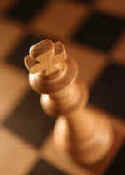Category: Miscellaneous MusingsAs a property owner, do you ever wonder what happens if someone comes onto your property uninvited and gets injured? A burglar breaks into your business and hurts himself by tripping over carpet that is not tacked down, sues you and wins - an urban legend or not? A child climbs your fence and gets into your pool and is injured - are you at fault?
From a legal perspective, "negligence" can be defined as a "failure to act with the prudence that a reasonable person would exercise under the same circumstances". You need to be aware that the "reasonable person" may be found to have different standards of reasonableness then you do. Also, more then one party can be negligent in a single accident.
As a property owner, you have a responsibility under the law to keep your property clear of items that might cause harm to other, or to notify others of their existence (ie "Keep Out - Dog" or "Keep Out - Well"). You have a heightened responsibility to protect any "attractive nuisance" such as a pool, from children, as the law tends to assume that children will wander and are not as knowing as adults (not to mention they may not be able to read those signs you put up).
So even in a situation where you took no action to cause harm to another, you may be found liable to some degree because you didn't take any action to prevent harm to another.
However, being found to be partially at fault for harm to another is not the end of the inquiry. Instead, depending on how much "at fault" you are deemed to be, and how much "at fault" another party is deemed to be, and where the accident took place, will determine if you are required to pay damages to anybody else.
There are several theories of sharing responsibility when negligence causes harm to another.
- Pure Contributory Negligence - If the damaged party is even 1% at fault, that party is entirely barred from recovery. If your trespasser is deemed 5% at fault for the damages, and you 95% at fault, the trespasser is totally barred from recovery.
- Pure Comparative Negligence - The damages that can be awarded to the party at fault are proportionately reduced by the amount to which they are deemed at fault. If your trespasser is deemed 95% at fault for the damages, and you 5% at fault, you will be liable for 5% of the total damages.
- Modified comparative Negligence - A combination of the two. The damages that can be awarded to the party at fault are proportionately reduced by the amount to which they are deemed at fault. However, if the damages party is more then 50% or 51% at fault (depending on the state) they are totally barred. So, if your trespasser is deemed 60% at fault for the damages, and you 40% at fault, you will have no liability. However, if your trespasser is deemed 40% at fault for the damages, and you 60% at fault, you will be responsible for 60% of the damages.
A chart listing the theory of how responsibility for negligence is shared by state can be found at
Matthiesen, Wickert & Lehrer, S.C. - Contributory Negligence/Comparative Fault Chart.












